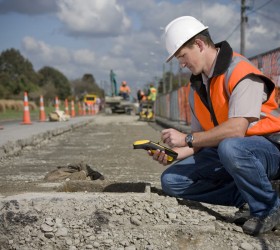Getting Your Data Right
Across multiple industries, field data collection that used to be done with forms and clipboards is undergoing a massive change. Previously only available to larger players with an extravagant IT budget and staff, real-time field data collection is changing how industries work at their most basic level. When your business has outstripped the ability of paper to carry the workload, the decision to upgrade can be a difficult but very important one. Paper records can be inaccurate, subject to duplication or eradication, and even to destruction. Putting it bluntly, at each tier in the paper-based data entry process from field to back office, the possibility of human error increases.
Going Real Time
By using and implementing a FReD field data collection app, even your most geographically distant operations can give you real-time data in your main office as that data is generated. This includes, but is not limited to: supply chain management, employee hours, field estimates, invoices, and other vital information that you need to run your business lean and mean. Having this information available helps you accurately judge how to allocate resources, and where to put them. This system should integrate with your other back-office software in order to reduce the possibility of human error, and streamline all of your operations. Some of the benefits of mobile field data collection are:
- Managing purchasing decisions and supply chain based off of real-time inventories.
- Real-time inventories of vital supplies and stock items. There are some things that you never want to run out of, and if you’ve been in business long enough, there may be some things that you never knew you had. Accurate inventory and supply chain management is vital to keeping costs under control.
- More efficient management of personnel and allocation of resources. Field personnel can receive incomplete assignments, send data to administration, and fulfill their duties all from a tablet or cell phone. With over 4 billion global mobile phone users, according to Statista, data collection via mobile device is available to anyone with iOS or Android.
- Quicker discovery of errors. Being able to see all of your data at once can lead to discovery of prior errors that have been promulgated. Eliminating “legacy” errors is a vital function of real-time data collection.
- Better communication reduces the back-and-forth that ties workers to the office. Workers can be mobile in the field without missing any important developments.
- Get rid of the filing cabinets. As previously mentioned, paper can be misfiled, thrown out, destroyed, or otherwise mishandled. Backing up your data to secure servers makes sure that you are not missing anything.
Everyone Makes Mistakes
Real time data collection cannot completely eliminate the possibility of human error. As noted, everyone does make mistakes. However, those mistakes when aggregated can be costly. If there is only a one percent error rate in 1 million entries per year, that is still 10,000 errors made per year. As an example, a recent article in The Canberra Times reported that errors in patient data had cost ACT health $3 million AUS per year. In healthcare, data errors can have a very human cost, so it should follow that data gathering practices be implemented and integrated to the extent that tears between data generation and data entry are eliminated. Training should also be implemented so that workers in the field collect data accurately.
Training needs to include some very basic concepts. Inaccurate data needs to be understood to be bad data. Consequences of bad data can include the inability to correctly answer questions, the inability to reconcile audits, wasted resources, and bad policy decisions. Northern Illinois University also notes that in a research setting, faulty data collection methods can cause actual harm to the participants. Training is critical, and employees need to be aware of the importance of the program that you are implementing. While one cannot completely eliminate mistakes, adequate training for field staff is a critical step. You may experience some blowback about the decision to implement mobile field data collections, but it should be made clear to field staff exactly why these changes need to take place.
When You are Everywhere
When you deploy field data collection software, you are eliminating the steps between collection and processing, and are able to view the raw data in real time – just as if you were there yourself. While different industries have different requirements, different regulations, and different processes, there are common needs across all workplaces. By deploying a comprehensive program and training, you will see results almost immediately, and understand what you have been missing. Data is more critical than ever to smaller companies competing in a crowded field. By getting in touch with FReD, you’re taking the first steps to ensure that your company is competing on a level field, but with a home-court advantage.
